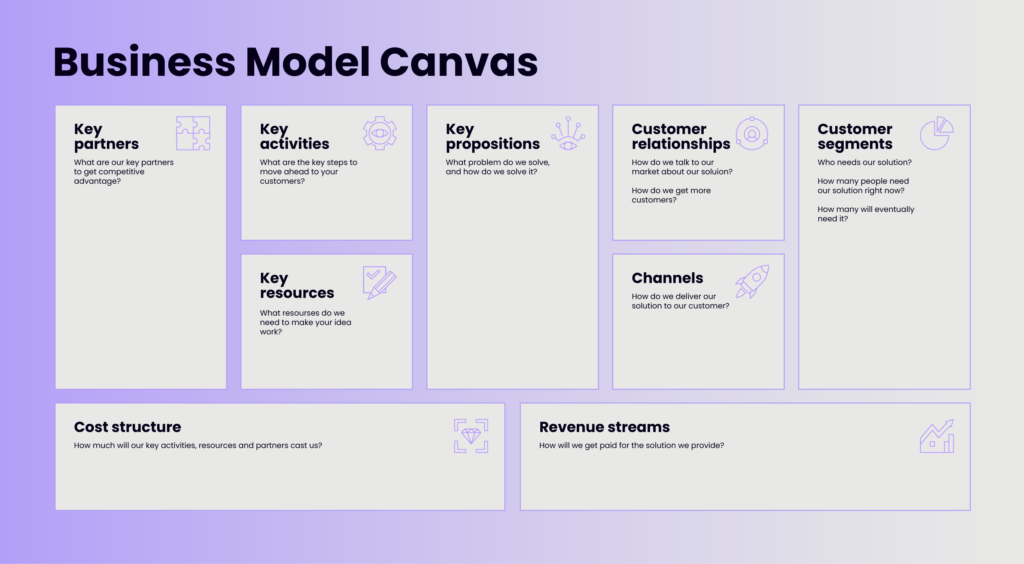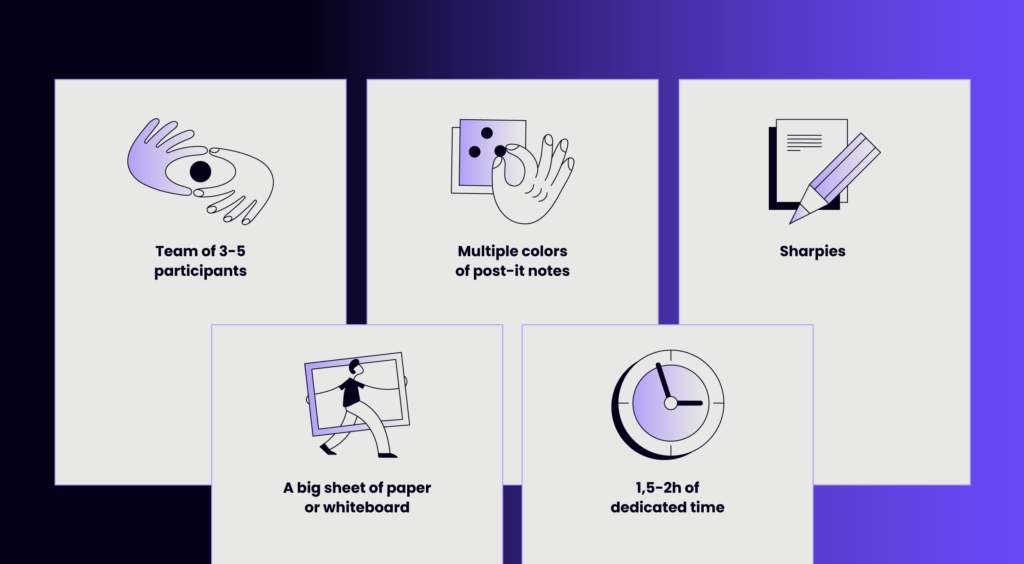Business model canvas for start-ups: The Windmill guide to design thinking
A start-up may find initial success selling one or two products to a small customer base without being too detailed in their business planning. But to scale up successfully, precision is required. A founder or executive team needs a birds-eye view of their whole business: customers, revenue, costs, propositions, activities, resources, channels, and partners.
Attaining that high-level view is easy with the business model canvas. The business model canvas is a powerful strategic tool. It can be used for developing a new business; regrouping and rationalizing if performance sags; or setting a business in a new direction. There are a few ways it does this:
- It helps to crystalize connections between a business idea and how to turn it into a reality.
- It shows a team how it thinks about and interacts with its customers, which can help expose weaknesses in its business model.
- It allows a team to get a clear idea of what the business is or will likely be.
Below is the template Windmill uses to help clients set their strategic priorities.

Understanding the Business Model Canvas for Start-ups
The Business Model Canvas is divided into four sections: Customers, Value, Infrastructure, and Finances. Let’s have a look at what each area means for your start-up.
Customers
The right-most areas of the canvas.
Customer segments. This area identifies which customers the business tries to serve. While you may want a large customer base, focus on who will buy your product first. Customer segmentation can be categorized by demography, geography, social class, financial class, personalities, etc.
Channels. How do you deliver your value proposition to customers? How are you going to meet them and tell them about your proposition? Where are your customers? The channel is a pathway of communication that links a community to the business (i.e social media, email marketing, networking, etc.)
Customer Relationships are defined by how a business interacts with its customers.
What kind of relationship do you want to have with your customer? Is it transactional, personal, automated, self-service, or community-oriented?
How will the business get new customers, how will the business keep customers purchasing or using its services, and how will it grow its revenue from its current customers?
Value
The central area of the canvas.
Key proposition is what distinguishes a company from its competitors. The value proposition provides value through various elements such as newness, performance, customization, “getting the job done,” design, brand/status, price, cost reduction, risk reduction, accessibility, and convenience/usability.
Infrastructure
The left-most area of the canvas.
Key activities. What does your business do to achieve the value proposition for your customers? Some examples include consulting, designing, web development, baking, or driving.
Key resources. These are the things you need to perform your business activities. They include office space, computers, hosting, people, internet connection, and electricity, among other things.
Key partners. These are people in your network who can help you. Key partners are external companies you may need to carry out business activities.
Finances
The bottom-most area of the canvas.
Cost structure. What are your company’s costs? Which key resources/ activities are most expensive? What is the structure of your business? Is it cost-driven or value-driven? What is the structure of your costs? Are they fixed or variable costs? Are there additional costs to running a business? These can include legal costs, insurance costs, etc.
Revenue streams. How does your company make money? What value are your customers willing to pay?
There are many different revenue models:
- Pay per product
- Fee for service
- Fixed rate
- Subscription
- Dividends
- Referral feeds
- Freemium
- Equity gain

Conducting a Business Model Canvas Session
Filling out a business model canvas is ideally suited for small team in a workshop environment.
- Team of 3-5 participants
- Multiple colors of post-it notes
- Sharpies
- A big sheet of paper or whiteboard
- 1½ to 2 hours of dedicated time
Step-by-step
- Set the stage. Before you start, work with the group to explain the process and ensure everyone is aligned with the why’s and how’s of the session.
- Fill each of the nine sections one-by-one by putting your notes on it. Start with the customer section on the right of the canvas, followed by value proposition, infrastructure, and finance. Try to map the most important aspects first and describe your criteria clearly so that the document is easy to interpret by someone seeing it for the first time.
- Each value proposition needs a customer segment and a revenue stream. If you have multiple customer segments, use a different color of Post-It notes for each. Colored Post-Its will help you see the value proposition and revenue stream for each segment better.
- Current state vs. new business. Are you mapping an existing business or its future state? Make sure you don’t mix the two—this is an easy trap to fall into. Mapping both current and future will allow you to identify any gaps. Put your best guess about customers, markets, infrastructure, etc. Assumptions are OK at this stage and can be replaced later as you gather data.
- Compare business models to find the best via a customer segment or pricing model. You can have discussions within the team about the pros and cons of each.
- Test it. Some elements of the canvas are easier to test than others, such as channel, revenue model, customer segment. For example, you can run A/B testing to test customer segments and the revenue model. Test what you can to generate early insights about the viability of your business model.
The business model canvas is one of the many tools Windmill uses as part of our digital product strategy services. With our help, you can accelerate your start-up’s growth strategy with confidence. Together we can rationalize objectives and create exciting web and mobile app concepts.
For further reading on Business Model Canvas framework, we recommend Business Model Generation by Alexander Osterwalder.




